Antique toy sewing machines, and charming relics of the past, have captivated collectors and sewing enthusiasts for generations. These diminutive yet fully functional machines offer a window into the history of sewing and craftsmanship.
A common question that arises regarding these miniature marvels is, “Do antique toy sewing machines have bobbins?” The answer is as diverse as the machines themselves.
Some antique toy sewing machines feature bobbins, while others do not, relying on unique mechanisms to create stitches.
In this exploration, we delve into the presence or absence of bobbins in antique toy sewing machines, their role, and the historical significance they hold in the world of collectibles and sewing education.
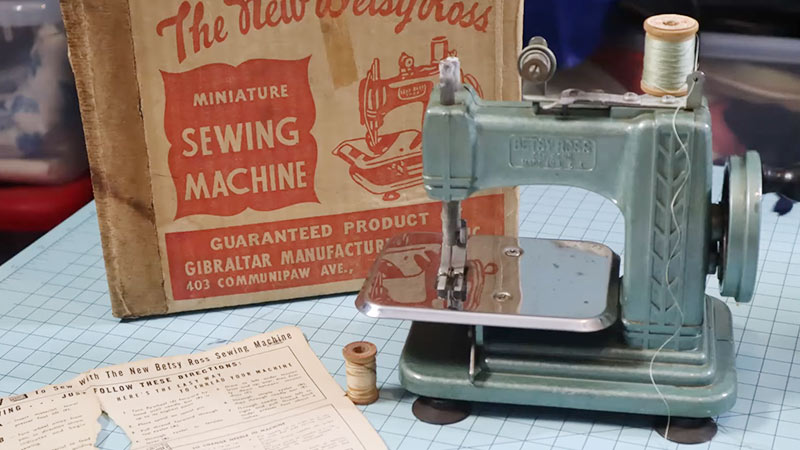
Do Antique Toy Sewing Machines Have Bobbins?
The presence of bobbins in antique toy sewing machines varies, contingent on the model and era. Early 19th-century versions often lacked bobbins, instead using a simple chain stitch mechanism with a single thread.
These were designed for basic sewing tasks and teaching children. In contrast, some mid-20th-century and later models more closely mimic full-sized sewing machines, featuring bobbins for traditional lockstitches.
The absence or presence of bobbins in these charming collectibles is a key factor that influences their functionality.
Therefore, it’s important for collectors and enthusiasts to inspect their chosen model to determine if it has a bobbin, impacting the types of stitches the machine can produce.
What Is the Historical Significance of Bobbins in Antique Toy Sewing Machines?
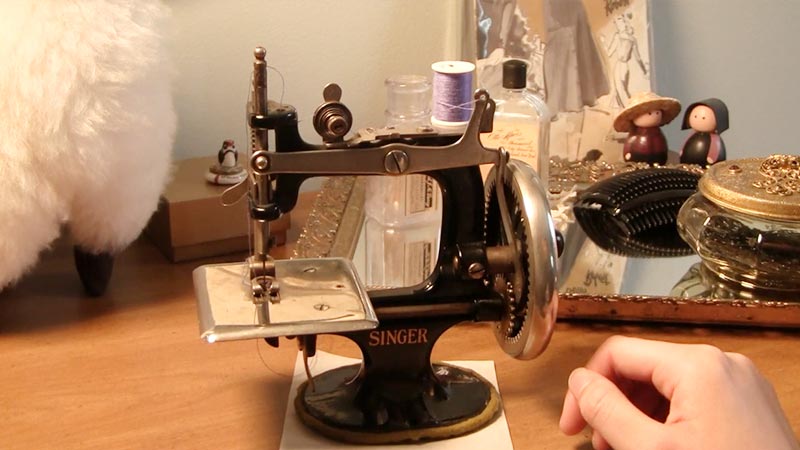
Antique toy sewing machines, those delightful relics from the past, offer not only a glimpse into the history of craftsmanship but also serve as important tools for understanding the social and educational values of their time.
The bobbins used in these miniature sewing machines hold historical significance in several ways:
Educational Tools
Antique toy sewing machines equipped with bobbins were often used as vital educational tools. In the 19th and early 20th centuries, sewing was an essential skill, particularly for young girls.
These miniaturized versions of real sewing machines allowed children to learn and practice sewing, nurturing their creativity, dexterity, and practical skills.
Reflection of Gender Roles
The presence of bobbins in antique toy sewing machines reflects the gender roles of the eras in which they were created. Sewing was primarily considered a woman’s task, and these toys reinforced the importance of sewing skills in girls’ education.
Craftsmanship and Innovation
The design and inclusion of bobbins in antique toy sewing machines showcase the craftsmanship and innovation of the times. These miniature machines were more than mere playthings; they were meticulously crafted, emphasizing attention to detail and functionality.
Mimicking Full-Sized Machines
Many antique toy sewing machines aimed to replicate the functionality of their full-sized counterparts, including the use of bobbins. These machines provided a valuable link between children’s play and the sewing technology of the day.
Cultural and Historical Insights
Antique toy sewing machines serve as tangible artifacts that provide insights into the culture and societal norms of the periods in which they were popular. They highlight the importance of sewing as a life skill and shed light on the role of women in domestic life.
What Are Bobbins in Antique Toy Sewing Machines Used For?
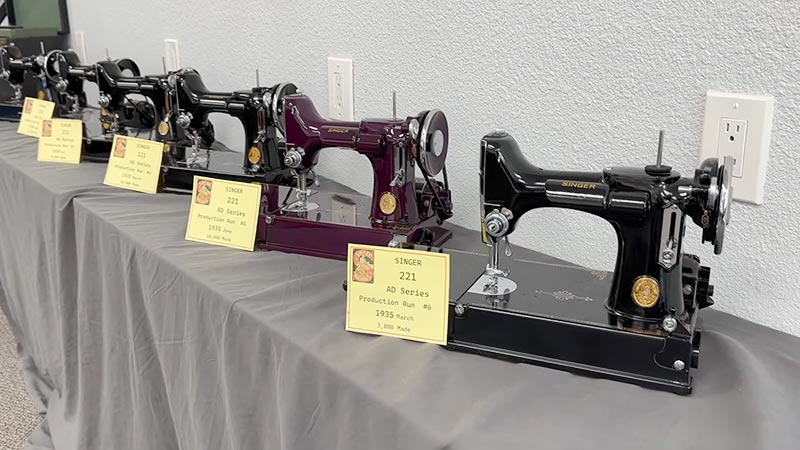
Bobbins, those small but essential components, are integral to the functionality of antique toy sewing machines. While they may appear inconspicuous, their role is paramount in the sewing process.
Here’s a closer look at what bobbins in antique toy sewing machines are used for:
Thread Storage
At its core, a bobbin is a compact spool that stores the lower thread. In antique toy sewing machines, where space is limited, bobbins provide an efficient way to house the thread needed for sewing.
This design keeps the machines portable and user-friendly, making them ideal for teaching children the art of sewing.
Tension Control
Achieving the right tension in sewing is vital for producing neat and balanced stitches. Bobbins in antique toy sewing machines enable tension regulation on the lower thread.
Proper tension adjustment ensures that the upper and lower threads work harmoniously, preventing issues like loose or overly tight seams.
Stitch Formation
Bobbins are central to the formation of stitches. As the needle thread and bobbin thread interlock and loop around each other, they create various types of stitches, including lockstitches.
These stitches are known for their durability and strength, making them suitable for a wide range of sewing projects.
Versatility
The presence of bobbins in antique toy sewing machines opens the door to versatility. Users can work with different thread colors and types in the upper and lower parts of the machine, facilitating creative and decorative stitching.
This versatility enhances the appeal of these miniature machines for various sewing projects, from doll clothes to handkerchiefs.
How to Use a Bobbin in an Antique Toy Sewing Machine?
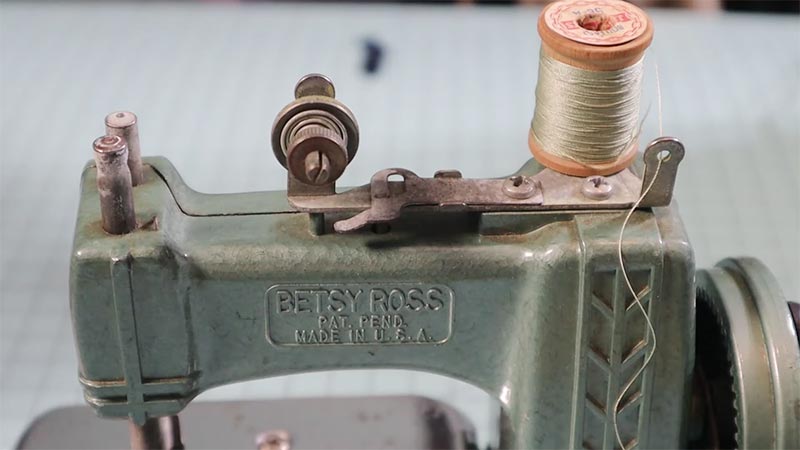
Using a bobbin in an antique toy sewing machine may seem like a charming journey into the past, and while these miniature machines operate differently from modern ones, they can still create beautiful stitches.
Here’s a guide on how to use a bobbin in an antique toy sewing machine:
Choose the Right Bobbin
Ensure you have a bobbin that is compatible with your specific antique toy sewing machine. These machines may have unique bobbin sizes, so it’s essential to match the right one.
Thread the Bobbin
If your antique toy sewing machine has a bobbin winder, thread the end of your thread through the hole in the bobbin. If it doesn’t have a winder, you may need to manually wind the bobbin by turning it on a separate device. Ensure the thread winds evenly and isn’t too loose or too tight.
Wind the Bobbin
Turn the handwheel manually or engage the bobbin winding mechanism, if available. This will wind the thread onto the bobbin. Make sure the winding is even and smooth.
Load the Bobbin
Insert the wound bobbin into the bobbin case or compartment, depending on your machine’s design. Refer to the machine’s manual or instructions for proper placement.
Thread the Machine
Thread the main sewing machine with a different color thread than the bobbin thread. Follow the threading path specified in the machine’s manual, making sure the thread passes through the tension discs, needle, and other necessary components.
Bring Up the Bobbin Thread
Manually lower the needle by rotating the handwheel. As the needle comes back up, it should bring up the bobbin thread. Use a small hook, the edge of a seam ripper, or your fingers to pull the bobbin thread up through the needle plate.
Begin Sewing
With both the top and bobbin threads threaded correctly, you’re ready to start sewing. Follow the machine’s specific instructions for engaging the sewing mechanism and begin stitching your project.
Tension Adjustments
Antique toy sewing machines may lack adjustable tension settings, so practice on a scrap of fabric to ensure that both threads are sewing evenly.
Are There Specific Bobbin Types for Antique Toy Sewing Machines?
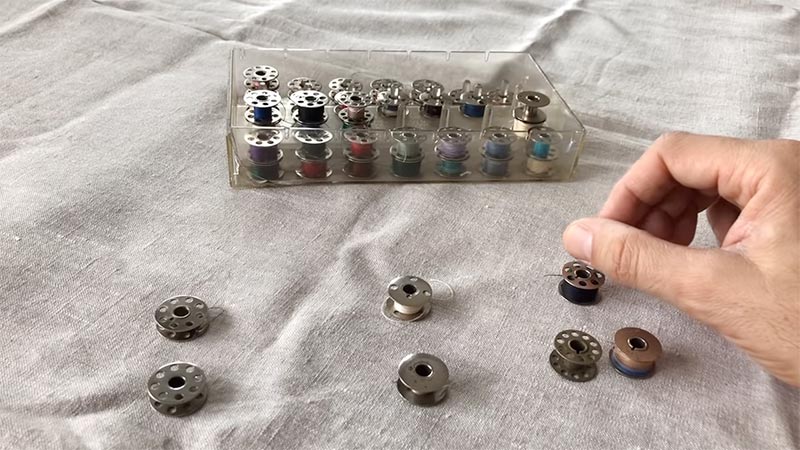
Yes, specific bobbin types are often required for antique toy sewing machines, just as they are for full-sized sewing machines.
The type and size of the bobbin can vary depending on the make and model of the toy sewing machine. It’s essential to find the correct bobbin that matches your specific antique toy sewing machine.
Here are a few key points to keep in mind:
Bobbin Size
Antique toy sewing machines typically use smaller bobbins compared to standard sewing machines. The size of the bobbin can vary between different toy sewing machine models, so it’s crucial to find the right size that fits your machine’s bobbin case.
Material
The material of the bobbin may also vary. While metal bobbins were common in older toy sewing machines, some later models may use plastic bobbins. Ensure that the material is compatible with your machine’s bobbin case.
Bobbin Shape
The shape of the bobbin, particularly the bobbin’s core, should match the design of your toy sewing machine. Some antique toy sewing machines may require specific bobbin shapes to fit correctly.
FAQs
Do all antique toy sewing machines have bobbins?
No, not all antique toy sewing machines have bobbins. Some use a chain stitch mechanism without bobbins, while others incorporate them for traditional stitching.
Can I use different thread colors with antique toy sewing machine bobbins?
Yes, many antique toy sewing machine bobbins allow you to use different thread colors in the upper and lower parts, enabling creative and decorative sewing.
How do I determine if my antique toy sewing machine has a bobbin?
To determine if your antique toy sewing machine has a bobbin, inspect the machine, check the manual, or search for online resources and images of similar models.
Are bobbins necessary for sewing with antique toy machines?
Bobbins aren’t always necessary for antique toy sewing machines; some use a chain stitch without bobbins, while others create traditional stitches with them.
Can I find replacement bobbins for antique toy sewing machines?
Yes, replacement bobbins for antique toy sewing machines can be found, but it’s crucial to ensure compatibility with your specific machine’s model and design.
To Recap
Antique toy sewing machines, each a small treasure from bygone eras, offer a fascinating journey into the history of sewing and craftsmanship. The presence or absence of bobbins in these miniaturized marvels reflects the diversity of their designs and functions.
While some boast bobbins, enabling them to mimic the sewing experience of their larger counterparts, others rely on unique mechanisms, emphasizing simplicity and practicality.
Collectors and sewing enthusiasts cherish these machines not only for their historical value but also for the lessons they offer in terms of education, gender roles, and creativity.
Regardless of the presence of bobbins, antique toy sewing machines continue to evoke a sense of nostalgia and appreciation for the art of sewing, making them timeless collectibles.
Leave a Reply